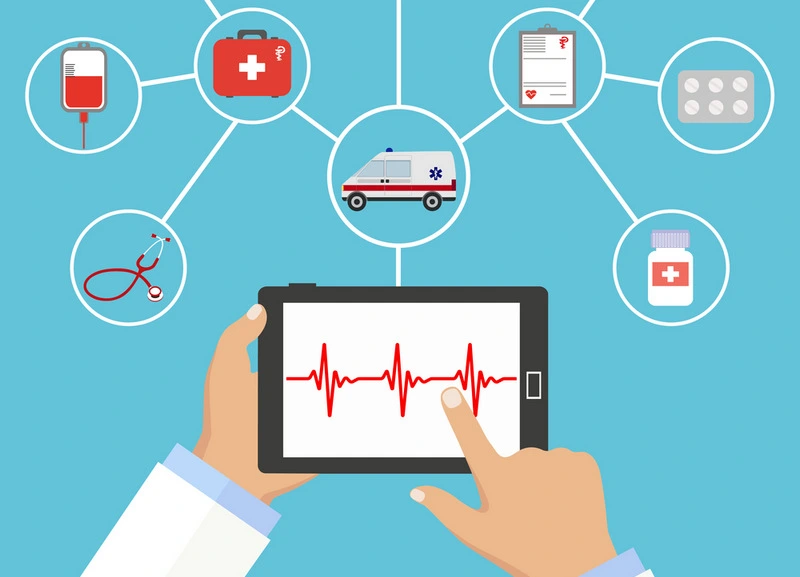One of the world’s biggest and most renowned authorities in the field of remote care, The Journal...
One of the world’s biggest and most renowned authorities in the field of remote care, The Journal of Telemedicine and Telecare, reported that equipment cost of an RPM program can range from $275 to $7963 annually per patient.* Additionally, most remote patient monitoring solutions have other costs such as maintenance, staff, monitoring, software updates, etc.
An effective remote patient monitoring solution requires capital for upfront and operational costs. When making an informed decision on which remote patient monitoring solution to invest in, it is pivotal to understand what you need, what you wish to have, and the hidden costs of such a strategy. In this article we’re going to give you a quick rundown on telehealth and RPM, and how they can supercharge your practice as well as a couple tips on how to choose the right equipment and infrastructure.
The difficulty of choosing the best remote patient monitoring solutions for your practice or team
A study pioneered by Insider Intelligence discovered that 23.4 million U.S. patients use remote patient monitoring solutions and services — on a daily basis.* By the year 2024, RPM services and tools are expected to reach over 30 million U.S. patients. The same survey showed that between 65% to 70% of folks are willing to participate in a remote patient monitoring program. Most feel that tools of this kind will improve their daily lives and help them better understand their conditions.
Choosing the best remote patient monitoring solutions for your practice is not an easy task. There are many options to choose from and you can't just go with the first one that you find. It is important to do your research before making a final decision. You should think about what features are critical for your needs, what kind of medical equipment you have, and how many patients you typically have in your practice.
Tips for choosing a remote patient monitoring solution
Today, telehealth and RPM services have emerged as invaluable and vital care models. It is one of the most effective forms of healthcare right now. These types of services have been around since the late 1960s, but due to technological breakthroughs RPM is rapidly expanding. It is currently shifting the paradigm, redefining what healthcare is and what it can be.

Currently, there are many remote patient monitoring solutions available to choose from. We’re going to evaluate some of the factors you should consider when deciding on an RPM package. It’s important to understand the five essential questions when it comes to remote patient monitoring solutions:
- Cost: What is the cost of the solution?
- Patient compliance: How easy is it for patients to use the solution?
- Accuracy of data: Is the data accurate and reliable?
- Scalability: Does the solution have scalability options?
- Support and training: Does the company offer support and training for users?
Audit your current practice
Evaluate the strengths and weaknesses of your current patient care and identify opportunities for improvement. Review your infrastructure and determine what you actually need. Right now, there are dozens of RPM packages each servicing a different medical area. From cardiology to diabetes. From dementia to claustrophobia. Obviously these are vital considerations when choosing an appropriate remote patient monitoring solution.
Do the research
Take your time to research different patient care and monitoring solutions available on the market. Did you know that Apple Watch gives patients and their clinicians important health data? For free? Apple Watch can track a person’s heart rate, sleep cycle, blood oxygen levels, and even do an ECG. Samsung’s watch meanwhile has the ability to monitor a person’s temperature. And each year, these companies incorporate new features into their cellphones and smartwatches. Sometimes, the answer you're looking for doesn’t require a huge undertaking or investment, it simply demands a free software patch — a link between what your patient already has and your practice.
Look for providers
Narrow down the list of remote patient monitoring solution providers that meet the following:
-Proven Experience.
-Clinical Evidence.
-Technical Viability.
Patient first
Prioritise patient-centred care — take into account patient needs and what they can handle. That includes the ease of use and how willing they are to adopt a remote patient monitoring solution. Your patients have to come first. You’ll need to understand them.

Costs and training
Your budget will dictate a lot of what you can and cannot implement. There are dozens of solutions out there to pick from. Just because you don’t have a huge budget doesn’t mean you can’t take advantage of today’s RPM tools — there is a solution for everyone and every pocket.
The next wave of healthcare
Healthcare is evolving — and part of the metamorphosis is due to remote patient monitoring solutions. Traditional healthcare was always, up until 2019, on the brink of readily accepting these practices. Nevertheless, it was somewhat recalcitrant. Cemented and unwilling to budge. The 2020 COVID pandemic pushed most practices over the edge and they had no other choice but to embrace RPM packages — regardless of their position on the subject. Remote patient monitoring solutions are here to stay.
*https://journals.sagepub.com/doi/full/10.1177/1357633X16669239
*https://www.insiderintelligence.com/content/us-remote-patient-monitoring-forecast-2021